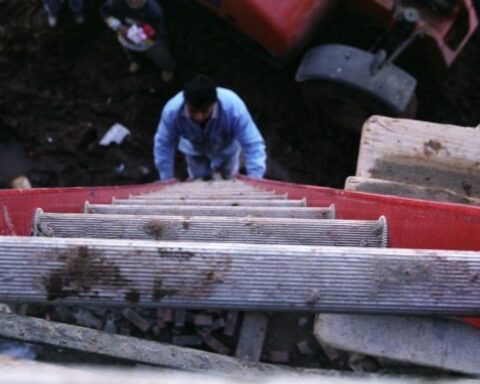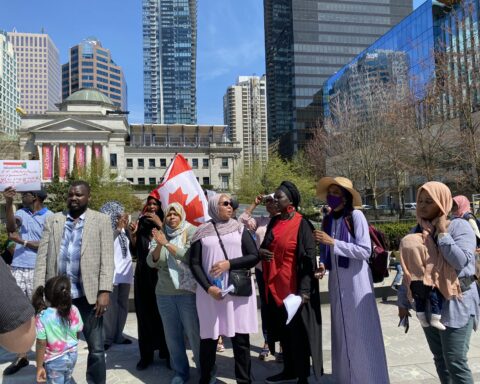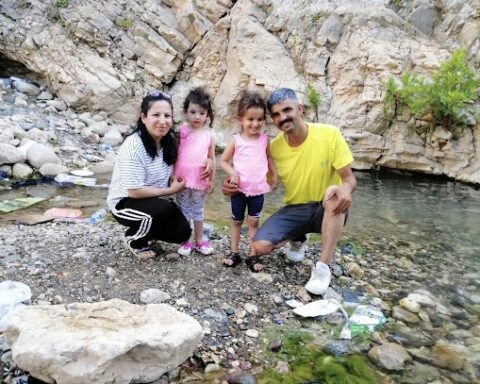Syria’s grave humanitarian crisis draws a great deal of challenges and risks for humanitarian workers in the area, says one representative of the International Committee of the Red Cross (ICRC).
“To access areas where fighting has had a severe impact is a continuous challenge,” says Rafiullah Qureshi, communication coordinator for the ICRC in Damascus, Syria.
“One has to wait for a lull in the fighting, but more importantly all sides involved in the fighting have to agree on some measure of truce so that humanitarian workers can cross frontlines.”
Qureshi asks, “If the human aid workers cannot be protected, then how [can the] millions of people who depend on them be assisted?”
“Since the beginning of the conflict, 48 volunteers of Syrian Arab Red Crescent and eight of Palestinian Red Crescent [Society] in Syria have lost their lives on humanitarian missions.”
According to a USAID report, 329 aid workers in 27 countries were victims of 190 major attacks in 2014.
This was 30 per cent less than in 2013, a year that saw a spike in casualties due to increasing conflict in Syria and South Sudan and ongoing violence in Afghanistan.
“[The decrease in attacks in 2014] was due mainly to reduced or reconfigured operational presence in these countries, with fewer aid workers deployed to field locations deemed insecure,” the report suggests.
Many risks in Syria
Four years ago, civil unrest in Syria resulted in intense brutalities. Like many other conflict-riddled countries, Syria remains full of risks for humanitarian aid workers.
“Since the beginning of the conflict, 48 volunteers of Syrian Arab Red Crescent and eight of Palestinian Red Crescent [Society] in Syria have lost their lives on humanitarian missions,”explains Qureshi. “Safety of aid workers remains our concern.”
Mary Kate MacIsaac, communications coordinator for CARE’s regional response unit in Syria, agrees.
“It’s not the prime time to do aid work inside Syria,” says MacIsaac, who is based in Amman, Jordan. “We don’t send CARE workers inside Syria, as moving between areas is not safe and security of our staff members is [the] number-one priority.”
Despite UNSC resolutions, violence in Syria has intensified, aid access has decreased and humanitarian assistance remains “chronically underfunded.”
CARE provides life-saving emergency assistance, food and emergency supplies to families and emergency medical equipment and support for women in Jordan, Lebanon and Turkey. Working with local partners, the organization has also reached more than 750,000 people inside Syria so far.
“These local people are good at identifying the besieged areas and negotiating with war factions and reach to [those affected],” explains MacIsaac.
Ongoing challenges for aid workers
As the war in Syria enters its fifth year next March, more than 20 international aid organizations have condemned the United Nations Security Council (UNSC), saying it has failed to implement three resolutions passed last year that demanded a boost to humanitarian assistance to Syrian civilians.
The report suggests that, despite the resolutions, violence in Syria has intensified, aid access has decreased and humanitarian assistance remains “chronically underfunded.”
The aid groups, which include the International Rescue Committee, the Norwegian Refugee Council and Handicap International, express concern that the resolutions have been “ignored or undermined by the parties to the conflict, other UN member states, and even by members of the UNSC itself.”
Utilities, such as water and electricity, have been taken over as weapons of war; some two million people have severe difficulty accessing water.
“Out of 6.5 million people still in Syria, 86 per cent feel obstacles in [reaching] hospitals, particularly women and [the] elderly, as attacks on hospitals are common and are majorly by the regime,” explains MacIsaac.
Last month, an ICRC team in Aleppo – led by Marianne Gasser, head of the delegation in Damascus, and accompanied by the Syrian Arab Red Crescent – crossed a frontline in the eastern part of the city to meet various opposition armed groups and to assess the humanitarian situation.
“It took almost a week to negotiate with various sides involved in the fighting to make this trip, and once all agreed to a specific time and day, then this operation was carried out,” Qureshi recalls.
To determine the crisis for basic needs, a recent report prepared by the ICRC shows that utilities, such as water and electricity, have been taken over as weapons of war; some two million people have severe difficulty accessing water.
The Syrian health-care system has also been impacted greatly by the conflict. There is shortage of medical supplies, health-care workers and electricity to allow operation rooms to function, says Qureshi. For pregnant women living in a besieged area, not having proper access to health care can be dangerous.
“In a besieged area, local doctors had to handle a delivery of triplets by C-section,” shares Qureshi. “The expectant mother was at a high risk, surgical materials are in short supply and electricity [was] being cut down without prior notice. However, the courageous doctors performed the operation and more surgeries are being carried out every day.”
“This war has to stop.”
‘Systemic collapse and destruction’
According to a UN-backed report issued in March 2015 by the Syrian Centre for Policy Research (SCPR), Syria now has the second-largest refugee population in the world after Palestine.
More than four million Syrians have fled to other countries to find work and safer lives as of the end of 2014, while 6.8 million have fled their homes, but remain in Syria.
The report says that the war in Syria has plunged 80 per cent of its people into poverty, reduced life expectancy by 20 years, and led to massive economic losses estimated at over $200 billion since the conflict began in 2010.
The SCPR draws a distressing scene by calling it a “systematic collapse and destruction” of Syria’s economic foundations.
It further states that nation’s wealth, infrastructure, institutions and much of its workforce have been “obliterated.”
However, aid organizations and its workers are a source of life and hope, as some like CARE provide incentive-based volunteering opportunities to refugees in camps.
“With young girls being raped, pregnant women suffering delivery trauma, infant mortality at a rise and elderly people suffering and a lack of humanitarian assistance – most importantly, this war has to stop,” concludes MacIsaac.
Editor’s Note: This report has been updated with the most recent number of people CARE has reached in Syria and the most recent number of people who have fled Syria.
Journalist Priya Ramanujam mentored the writer of this article, through the New Canadian Media mentorship program.
Tazeen is based in Mississauga and is a reporter with the New Canadian Media. Back in Pakistan where she comes from, she was a senior producer and editorial head in reputable news channels. She holds a master’s degree in Media and Communication and a certificate in TV program production from Radio Netherlands Training Center. She is also the recipient of NCM's Top Story of 2022 award for her story a "A victim of torture, blogger continues fight for human rights in Pakistan"





